Photo
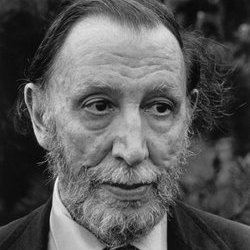
Blog #10- And God Created Great Whales- Alan Hovhaness
“And God Created Great Whales” was composed by Alan Hovhaness in 1970. This piece was written during the 20thcentury as new techniques and elements were being added to music to create a “eclectic” feel. The genre of this piece is orchestra band music with added recorded sounds that resemble the cry of whales. Hovhaness was an Armenian-American composer who wrote a lot of programmatic music during the 20thcentury. This particular piece contains aleatory music, great themes, and whale sound recordings that make it unique to any that I have heard before. The song begins with instruments playing all different rhythms, and it sounds like the players are tuning their instruments. The first theme begins with a clash of cymbals and introduces a loud melody. The second theme is more melodic and contains violin parts that play pizzicato notes. This theme gets gradually louder and louder through the brasses until the whale sounds begin. When I first heard the whale sounds, it made me think of the time I went whale watching with my family one vacation. After the whale sounds end, the aleatory music returns. The first theme is introduced again and ends the piece by tying all the elements Hovhaness uses together. A glissando, a very fast sliding of notes up and down a scale, concludes the piece. This work was one of my favorites to write about because it is so different and special from those that are included in any of the past time periods.
1 note
·
View note
Photo

Blog #9- The Stars and Stripes forever by John Phillip Sousa
“The Stars and Stripes Forever” was written by John Philip Sousa in 1896. Sousa wrote this song while on a trip back from Europe. He first enlisted in the Marines as a band leader which fed his hunger to produce patriotic and nationalistic music. Sousa was nicknamed “The March King” because of the number of band marches he had written after the 1890s. This particular piece was written during the 20thcentury, a time when a sense of nationalism was being adopted in America. It is a classic Band Marching song that is known nation-wide for its patriotic melody and huge band arrangement. Sousa incorporates many elements into this piece, including a trio that consists of two sections that are sixteen measures long and a cool rhythm with syncopation. There is a central theme repeated throughout the trio called “dogfight”, which features low brass instruments playing the same notes over and over again. There are three sections to this piece: first strain, second strain, and the trio. The first strain is relatively short and contains syncopation and a dramatic drum roll. The second strain is more energetic and light, but it is way shorter than the first strain. This work is very special because it makes one think of our amazing country when listening to it. When this song was first released, it was almost like a second national anthem to American citizens. It reminds people of the goal set when our country goes off to war and what we accomplish in battle.
0 notes
Photo
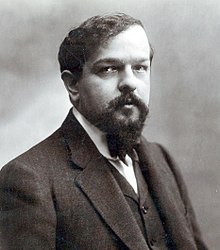
Blog #8- Clair de Lune by Claude Debussy
“Clair de lune” was composed by Claude Debussy in 1890, but this piece was altered slightly in 1905. Debussy was a French composer who wrote most of his music during the Impressionist era. This specific work is a character piece, which means it is a composition of piano music based on a single idea. “Clair de lune” means “moonlight”, and the theme of soft and light is exemplified throughout the song. It has also been transcribed for orchestras because so many people see how unique it is. The form of this piece is ABA, and the opening section is very melodic and smooth. Slowly, the music becomes louder and louder until a contrasting section jumps in and softens the melody. The opening melody returns to the song and the soft melody begins to play again, followed by chords that sound harp-like. The melody is very simple with basic notes, but Debussy creates altering notes that create a decorative feel to the general melody. He also utilizes ties throughout the piece, creating a flowing effect from one note to another. I think this piece is especially beautiful, and since I play this piano, I have played it many times in recitals and just for fun. It is an easy piece to get into, and I love how it tells a story from beginning to end. Piano music is one of my favorites to listen to because it can be so calming but so loud and emotional at the same time.
0 notes
Photo
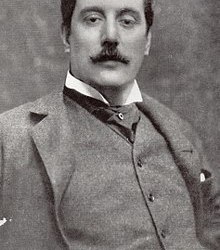
Blog #7- La Bohema by Giacomo Puccini
“La Boheme” was composed by Giacomo Puccini in 1896. Puccini was an Italian opera composer who wrote many famous works during the Romantic time period and created many stories that people still listen to today. “La Boheme” translates to mean “The Bohemian”, and that theme is reflected throughout the work with its interesting and gypsy-like musical style. This opera is about an average man, Rodolfo, who falls in love with a girl, Mimi, living in his apartment complex. The first act explains how the two meet when Mimi needs help getting up the stairs to her room and Rodolfo swoops in and comes to her rescue. Rodolfo invites Mimi for a glass of wine and some time to sit before going to her room, and while there, the two realize that Mimi’s keys are gone so they begin to look around. Sneakily, Rodolfo finds the key but since he wants Mimi to stay longer, he hides it in his pocket. While searching on the ground, their hands touch and that begins an aria that exemplifies all the Romantic period’s elements. In this aria, Rodolfo starts off the piece and begins to tell Mimi about his profession but slowly begins to tell her of his feelings for her. It is a sweet love story, and what I love most about it is it represents the tale of two average people falling in love. Sometimes operas are so far-fetched that it is hard to understand them and relate to them, but Puccini does a wonderful job at bringing a simple love story to life.
0 notes
Photo

Blog #6- “La Campanella by Franz Liszt
“La Campanella” was composed by Franz Liszt, a Hungarian composer, in 1851. Liszt looked up to Paganini, a famous Italian composer, and his virtuoso skills on the violin. Since he loved Paganini so much, Liszt transcribed several of his mentor’s works, and included in these pieces is “La Campanella” which means “little bell”. This work comes from the Romantic era, and it is a virtuoso piano piece. Liszt imitated a bell sound in his piece with a high D-sharp routinely throughout. Virtuoso music was very popular during this time, and this piece was a prime example of a typical Romantic piece of music. The piano is highlighted, and Liszt tries to make it seem like the piano is doing the job of many other instruments. The form of this piece is AAB, so it is a little different than other musical forms. Overall, this piece of music is simple technique-wise, but it does an excellent job emphasizing a few important moments. There is a central theme throughout, and it gets repeated and added to in different parts of the music. Decorative notes are added, dynamics are expanded, and fragments of the theme are highlighted. Liszt did include a contrasting section that brings interest to the entire piece. The song ends with a soft accented chord that ties in the whole “bell” sound played throughout. I really enjoyed this work, and I liked that it was simple enough to understand but still technically challenging enough to highlight the composer.
0 notes
Photo
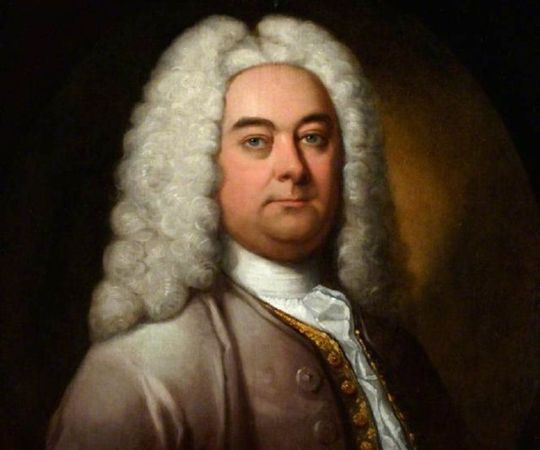
Blog #5 “The Voice of Him That Crieth in the Wilderness”- Handel
This piece was composed by George Fredric Handel in 1741. This composition was created during the Baroque era which emphasized the use of melody, texture, and timbre. This piece was very inspirational to the time period and it had a lot of significance. The movement starts off with the singer saying, “The voice of him that crieth in the wilderness, prepare ye the way of the Lord,” which automatically makes this piece sound very religious and somewhat spiritual. The lyrics displayed in this movement discuss the return of God, and the instruments produce a very short and staccato sound, so they do not take away from the singer’s spotlight. The recitative ends with a simple cadence which is a melodic way a phrase ends, and in this case, the cadence is a few short chords. The Messiah is a very well-known piece that many choirs still sing now. When I was in the advanced choir at my high school, we sang the Messiah in its entirety, and it was one of the hardest and longest songs I have ever sung, but it was worth it. Handel uses a light and dramatic tone to make his songs memorable and available for orchestras and choirs to perform. I really appreciate this composition of Handel’s because it is timeless, and most everyone has heard at least one part of it. I think that The Messiah is a piece that brings everyone together, no matter the age, gender, or race.
0 notes
Photo
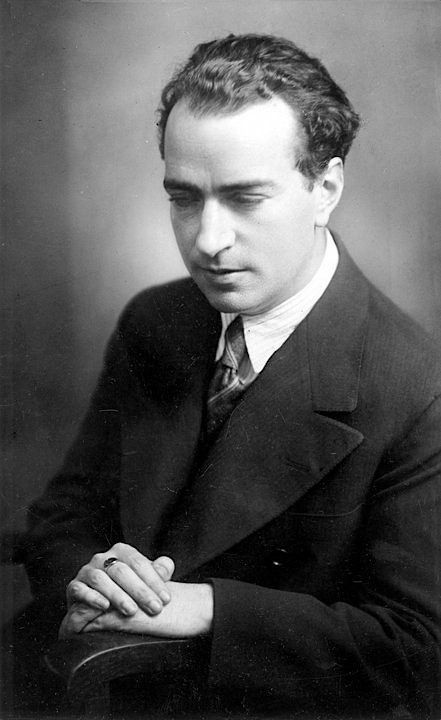
Blog #4- “Concierto de Aranjuez”- Joaquin Rodrigo
This concerto was composed by Joaquin Rodrigo in 1939. This piece was written in the 20th century and it reflects the Spanish culture. Concertos contain the elements of a soloist performance and the reminder of an orchestra or small group of instrumentalists. This work was written to represent the very tragic events happening in Rodrigo’s life. This piece starts off with a guitar strumming softly with four chords. Additionally, there are four parts to “Concierto de Aranjuez”: adagio, solo guitar, cadenza, and the main theme. The adagio part of the piece creates a slow melodic movement to ease listeners into the music. Rodrigo uses the guitar as his solo instrument in his concerto, and this guitar solo shows great technique by the soloist. The cadenza is a fast pace, free rhythmic part of the piece that also shows the techniques of a guitar soloist. I personally enjoyed this part of “Concierto de Aranjuez” the most. His skill as a composer makes it seem like it is from the heart of the guitarist, and it represents the emotions displayed in Rodrigo’s mind while he wrote this composition. This movement of Rodrigo’s piece ends with the main theme that brings all the instruments together and implements the orchestra part of the concerto. It ties the entire piece together. The notes played are in higher octaves than the other parts of the piece. I really enjoyed this piece because it seems like it is so from his heart and gave me glimpse of life in another culture.
0 notes
Photo

Blog #3- “Hallelujah”- George Frideric Handel
This piece is very familiar to me and a lot of other Christians because this song is traditionally performed at Christmas time. Throughout this piece there is a lot of words strategically placed for their rhythmic emphasis. The chorus starts off at the beginning saying “hallelujah” five times and then continues five more times at a different level of pitch. The word hallelujah is constantly repeated in sets of multiple throughout this work. At 0:35, altos, tenors, and basses repeat “For the Lord God, followed by another set of Hallelujah’s. After this, sopranos sing while the chorus sings Hallelujah in counterpoints. At 0;53, just tenors and basses sing “For the Lord God” while the other two voice parts, sopranos and altos sing a contrasting “Hallelujah”. Then, at 1:02, this part changes where altos and tenors sing “For the Lord God.” While sopranos and basses sing the “Hallelujahs” in counterpoint. This piece has a faster tempo while the pitch constantly changes because the voice parts are constantly fluctuating and changing. This piece reminds me of going to the Christmas mass at my Catholic church. The important words in these phrases land on the important beats and parts of the beats in the rhythm pattern. The words “Hallelujah” are sung very quickly while the other words are sung more steadily. Handel also using text paining when the first few notes of the phrase ascend when stepping up. Throughout the middle section, the word are sung more softly at a lower pitch level while in sections after this the words become much louder and higher as the words progress.
0 notes
Photo
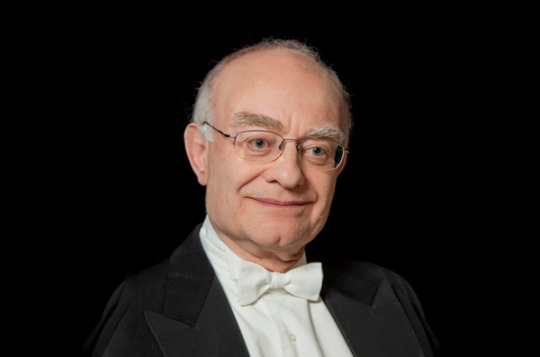
Blog #2 “Open Thou Mine Eyes”- John Rutter
This piece is from the choral tradition of English church music. This piece is very beautiful and took after the very polished, refined quality. The pitches stay perfectly in tune and the groups of singers were made up of boys with unchanged soprano and alto parts. This piece starts out with sopranos singing the opening verse which starts off “Open thou mine eyes” then at 0:28 the alto enters and the sopranos divide into two parts. Then the first verse is repeated after the split. At 0:57, the tenors and basses sing a contrasting section that starts off with “O Lord God”. At 1:17, continuing with the same slow tempo, the upper and lower voices combine as a melody and in harmony return. At 1:55, the melody is sung by sopranos as the other voices heard previously hum the accompaniment. At 2:21 the music closes quietly with continuously flowing notes in alto and tenor parts. The ending was my favorite part of this whole piece because it carries such beauty with it to close such an already beautiful song. This song carries the same sound of church music that is played today and it reminds me of traditional music that I listened to when I was growing up and went to church with my family. I really enjoyed the harmonies between the different voice parts because they were very in sync and made the music feels like it was one fluid motion even though it had multiple different voice parts.
0 notes
Photo
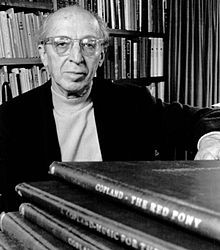
BLOG #1- Hoe Down by Aaron Copeland
In the introduction of this piece, the orchestra starts off with a fast tempo and very loud music. Then around 0:40, the theme begins with mostly strings then transitions into a square dance music. At 0:48, the violins continue with more square dance sounding music as the brasses and lower strings sound chords off the beat. At 1:11, the orchestra joins into the square dance sounding music and play the first theme but instead of a few instruments playing, it is a more dynamic sound with more instruments. Continuing on, at 1:20 the first theme is repeated again. The first theme carries the same fast tempo that this piece carries almost all the way throughout. The second theme starts at 1:40 and is played by a trumpet then strings accompany the trumpet in playing the second theme. At 2:11, violins and other instruments take up these previously referred to square dancing theme. Then an oboe joins into the theme. around 2:30 the tempo starts to slow down and take a more quiet pitch. This is a large change from the previous sections of this music. Then the orchestra picks up the square dance music again and then closes with a three-note cadence. This piece is very beautiful and has very energetic square dance qualities. There is a folk music style to it because the short pattern of notes appears several times. this certain piece of music can be divided into three different sections and the opening section is repeated throughout the whole piece.
1 note
·
View note